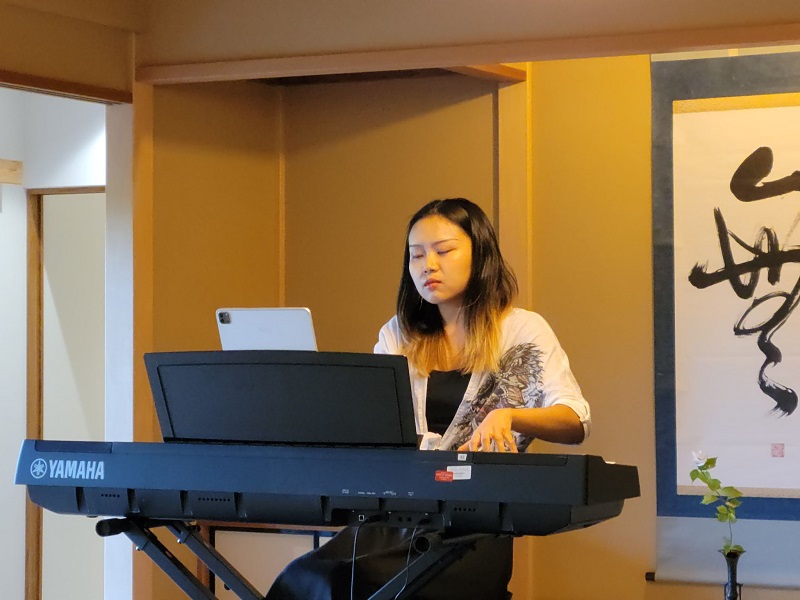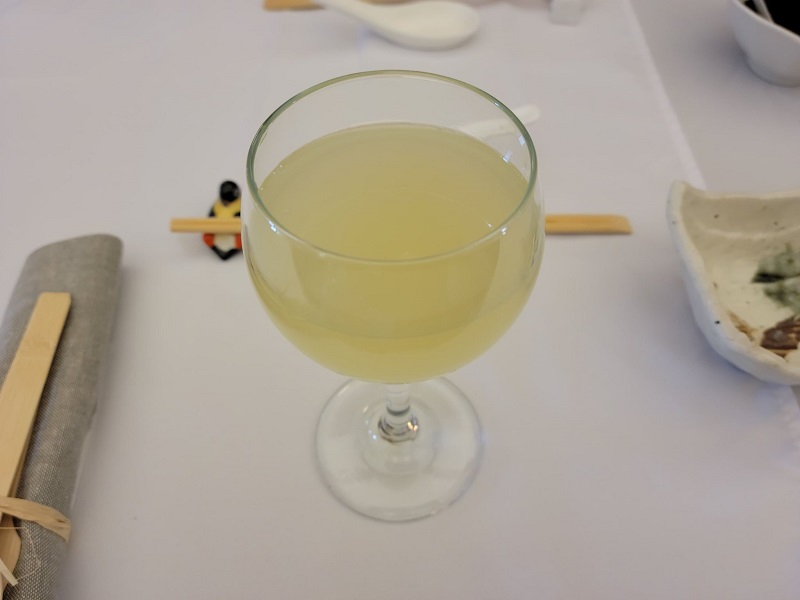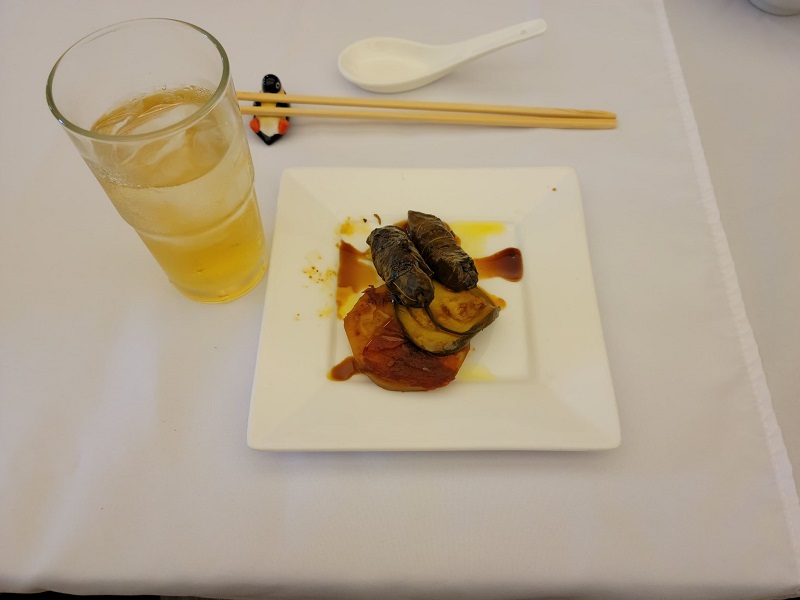On rare occasions, Japan House invites together chefs from different cultures who work together to create a truly memorable experience. This time, I had the privilege of sharing The 10 Ways of Rice: An Exploration of Asian Culture.

Photo by Matthew Macomber.
Hosted by Archana Shekara, Professor of Graphic Design at Illinois State University (India) and Jennifer Gunji-Ballsrud, Director of Japan House, University of Illinois (Japan), they gathered eight other chefs to represent ten different cultures (represented in parenthesis) and how they use rice. The chefs were: Annie Sungkajun (Thailand), Eman Al-Zubeidi (Palestine-Lebanon), Jason Reblando (Philippines), Jimmy Luu (Vietnam), Ladan Bahmani (Iran), Erol Sozen (Turkey), Suejung Han (South Korea), and Tak Cheung (China). Several of the chefs traveled from across the country to help put on this event.

Photo by Matthew Macomber.
A lovingly crafted booklet described some of the dishes and also directions on how to make them. The chef responsible described each item as it was brought to our tables.

Photo by Matthew Macomber.
While we ate, PhD student Yarong Rachel Guan played incredible piano pieces for the attendees.

Photo by Matthew Macomber.
To start, we enjoyed a sake cocktail (Japan) made with rice wine. There was a nice bite from the bubbles in this cocktail, and it got the evening off to a strong start. The rice crackers were also waiting for us at our tables and provided a little salty snack while the chefs and Japan House staff finished prepping the food in the kitchen.

Photo by Matthew Macomber.
Continuing the alcohol treatment, makgeolli (South Korea) was served to us next. This rice wine was smooth, sweet, and vaguely milky in taste. It was not quite like anything I’ve drank before.

Photo by Matthew Macomber.
Next up was goi cuon (Vietnam). Tofu and veggies rolled inside rice paper made this appetizer nice and light. A good thing, too, as we had twenty more menu items to go!

Photo by Matthew Macomber.
The appe and coconut chutney (India) was a fun dish. Almost bite-sized, the balls (appe) were the perfect size to eat as finger food with the chutney. There was a surprising amount of spice to the rice balls, though not unpleasant. It added to the overall experience and made it more memorable.

Photo by Matthew Macomber.
The warak enab (Palestine-Lebanon) was the strongest tasting dish yet. Grape leaves wrapped around vegetables with a potato slice and eggplant on the side, the sauce covering everything gave it all a deep, dark, rich flavor. Surprisingly strong in comparison to the previous dishes. We also enjoyed a cold glass of genmaicha (Japan), a roasted rice tea.

Photo by Matthew Macomber.
Finishing off our appetizers was a cup of jok (Thailand). Rice porridge with shitake mushrooms, ginger, and cilantro, I surprised myself with how much I enjoyed the porridge. I embraced the intense palate cleansing taste of the fresh ginger and the simple heartiness of the rice. We were told this is a popular dish when people are sick in Thailand since it takes little effort to enjoy, and I believe that.

Photo by Matthew Macomber.
Starting our main course off simply was bansang (South Korea). This simple bowl of white rice was served with crispy seaweed, kimchi, tofu, and a fried vegetable. A little bit of everything, it’s hard to go wrong with a simple, well-made array like this.

Photo by Matthew Macomber.
For the garlic lovers out there, you’ll be pleased to know we enjoyed garlic fried rice (Philippines). Garnished with rosemary, this warm rice dish certainly had enough garlic to satisfy anyone who, like me, appreciates the taste.

Photo by Matthew Macomber.
A rice paper salad (Vietnam) spiced things up (literally) with chili oil alongside mango strips, veggies, and black sesame rice paper. One of the more unusual main courses, each bite was interesting and different.

Photo by Matthew Macomber.
At first glance a dessert, tahchin (Iran) certainly wasn’t after biting into it. Made with white rice, saffron, egg and yogurt, this course tasted almost like cake. The scattered raisins and barberries provided not just some added sweetness, but my first-time eating barberries, as well. They tasted like cranberries.

Photo by Matthew Macomber.
Dible (Turkey) was a great way to enjoy green beans and rice. Served warm, it makes sense why this is a comfort food in Turkey. It’s simple yet satisfying all the same.

Photo by Matthew Macomber.
Cong dan Mixian (China) was another satisfying course. Rice noodle, scallion, a hard-boiled egg, and vegetables made for a pleasant taste. The dots of hoisin and oyster sauce dollops were nice artistic flourishes.

Photo by Matthew Macomber.
Doing my best to keep up with the fast tempo of dishes, we were next served biryani and cucumber raita (India). With just a hint of heat, this rice, vegetable, paneer, and curd sauce dish was quite hearty. The mint leaf on top served as a refreshing reminder that we were not far from dessert.

Photo by Matthew Macomber.
Wrapping up our main course, we enjoyed ochazuke (Japan). A collection of odds and ends with some strongly pickled extras, we were told this dish was a popular way to utilize whatever is left at home. It’s common to always have rice and green tea on hand in Japan, so putting whatever you want on a bed of warm rice and pouring hot green tea over it makes for a simple and easy meal.

Photo by Matthew Macomber.
For dessert, they were brought out all at once on a single tray to go through as we chose. I’ll list them off here and mention some of my personal highlights. The chefs prepared: sutlac (Turkey, rice pudding with nuts), shole zard (Iran, sweet saffron rice pudding with slivered almonds), khao niaow ma muang (Thai, glutinous rice topped with coconut milk and mango slices), bibingka (Philippines, coconut rice cake), roz bi haleeb (Palestine-Lebanon, sweet rice pudding topped with pistachios and rose petals), jian dui (China, fried glutinous rice balls with red bean filling covered with sesame seeds), halbai (India, rice sweetened with jaggery and covered with desiccated coconut and saffron), mochi (Japan, rice cake with red bean paste), and finally a cup of hot genmaicha (Japan, toasted rice tea).
Of all this wonderful assortment of desserts, I most enjoyed the roz bi haleeb and halbai. The halbai was surprisingly soft and had a subtle sweetness I quite liked. Archana learned this recipe from her family, as it was a favorite of her great grandmother. With the roz bi haleeb, I loved the rose syrup added into the rice. Floral flavors in desserts are rare in our area so I try to savor them when possible.

Photo by Matthew Macomber.
When everything wrapped up, the chefs and staff came out so we could thank them for the work they put into the evening. Archana, a former graduate student of Jennifer, embraced her with a warm hug to close out the wonderful event. Since these dinners are truly once in a lifetime events, I’m glad I took the time to attend at Japan House.

Photo by Matthew Macomber.
Japan House
2000 S Lincoln Ave
Urbana
Open during Tea Ceremonies (reservations required)
Open during other Public Events (View the Japan House Schedule)








